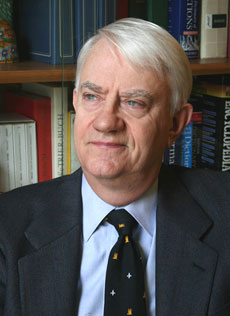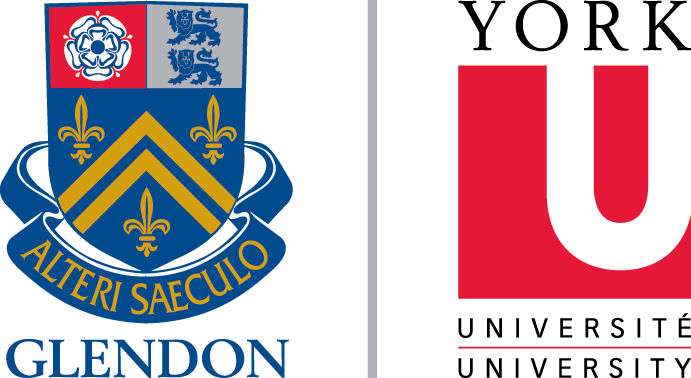 My good feelings about Glendon go back half a century. Fifty years ago this spring I saw the campus for the first time when an acquaintance who taught at York gave me a tour. I remember admiring the attractive grounds and the splendid view over the Don Valley. The campus struck me as a very agreeable place.
My good feelings about Glendon go back half a century. Fifty years ago this spring I saw the campus for the first time when an acquaintance who taught at York gave me a tour. I remember admiring the attractive grounds and the splendid view over the Don Valley. The campus struck me as a very agreeable place.
In the course of the next three years I visited York several more times. On one of these occasions, in early 1967, I interviewed Principal Escott Reid in connection with my Ph.D. dissertation. Strange to say, his title did not alert me to the changed status of the campus. Although I was a student at the University of Toronto, I was quite unaware of York’s move to the new Keele campus, which began in 1965, and of the establishment of Glendon College in 1966.
When I sent a job application to Edgar McInnis in the fall of 1967, I thought I was writing to the man in charge of York’s History department. A few weeks later he offered me a position teaching Canadian history at Glendon College. What was this college? Fortunately the library of the University of California at Berkeley, where I was living at the time, had a copy of Glendon’s first calendar. From it I learned that the Glendon campus now housed a college of the university that in the meantime had itself moved to the outskirts of North York.
Well, I liked the Glendon campus, and I knew nothing about the new campus, so Glendon it would be. If I read about the bilingual side of Glendon, it failed to make an impression on me. Probably this was because McInnis didn’t mention it. (I later learned he also didn’t mention it to Irving Abella, who joined the department when I did.)
An exchange of letters with Dean of Students George Tatham led to my appointment as a don in Wood Residence. That, more than my academic appointment, would cement my relationship with Glendon, for it put me on campus full-time and made it possible for me to get to know many students far better than most professors ever do.
In the late 1960s and early 1970s the dons were a mix of academics, law students, high school teachers, and other young professionals who functioned rather like older siblings to the students. Among them were Roger Gannon, a new recruit to the English department, Rick Schultz, a York graduate who had joined the Political Science department and served as secretary to Faculty Council, Diana Crosbie, a high-school psychologist who would soon enter the world of publishing and then public relations, and aspiring lawyer Paul Cantor, who taught me squash, a game I still play. (He would eventually become Chair of the Board of Governors.)
To list all the students I knew in those days would be impossible, but some stand out. Jim Park, the student union president, Glen Williams, who took my fourth-year course, and Bob McGaw were active in the Liber-Action movement in the fall of 1968. Among its immediate results were the abolition of high table and the integration of the washrooms (no longer would faculty and students relieve themselves in separate locations). Longer-range consequences were an increase of the number of students on faculty council and the establishment of student parity on most council committees. Liber-Action also prompted a conference in 1969, “The Year of the Barricade.” Focused on the student movement of the later 1960s, it aroused apprehension among the Board of Governors. However, they accepted Escott Reid’s recommendation that the conference be permitted to take place.
One of my happiest memories is sitting next to Escott on the floor of the Old Dining Hall, listening to a debate on a recent student strike at Simon Fraser University. One participant was C.B. (Brough) Macpherson, a University of Toronto neo-Marxist political theorist with impressive left-wing credentials. All the same, an SFU graduate student accused him of being, au fond, an apologist for capitalist and reactionary social forces. Escott, who had known Brough for more than 30 years, leaned over to me and whispered: “Michiel, please pinch me. I want to make sure that I’m not dreaming.”
David Cole was prominent among the students keenly interested in Canada-Quebec relations. Having organized the “Quebec Year Eight” conference in 1967-68, he organized a summer conference on “The Other Solitude” in the summer of 1970. He was from Peterborough, one of a number of good students who came from out of town. Ottawa supplied several politically engaged students, among them Jan Armstrong, Murray Coolican, and Enid Slack. From London came John McNee, who would have a stellar career in External Affairs. Many students were of high intellectual quality, and they were well worth talking with.
An active drama program gave prominence to actors such as Trish (Kate) Nelligan, Charles Northcote, and Jack Wetherall. Journalists like sports reporter extraordinaire Nick Martin, inventor of Viet Squirrel and the Serpent of the Don, made Pro Tem fun to read. I could go on listing names, but the reader has surely got the point. Glendon College was intellectually and culturally very lively.
Some students were already bilingual in English and French or became so as a result of their studies at Glendon, often augmented by a stay in Quebec or France. But on the whole the Glendon College of those years was largely English-speaking. There was a French table in one of the dining halls, but I don’t think it was overcrowded. Quebec students like Chantal Hébert (now a Toronto Star columnist), Renault Marier, Denis Massicotte, and Hubert St. Onge seemed keener on improving their English than on speaking French.
The policy of bilingualism, in fact, posed a problem for Glendon. The college required anglophone students to study French at precisely the time when Canadian universities, pressured by students hostile to compulsion, were abandoning second-language requirements. As a result, Glendon’s French requirement was a tough sell. Until 1970-71, Glendon met its enrolment target by registering overflow first-year Arts students. A few of them stayed on; most left for the Keele campus after one year. In 1970, however, there was no Arts overflow, and in 1971 Glendon opened a unilingual stream to raise enrolment. (It persisted until 1987.)
As for the faculty and administrative staff: most who arrived in the first six years were unable to function in French. There was a shortage of qualified faculty in Canada, as universities new and old were hiring at an unprecedented rate. The baby boomers were entering in growing numbers, and they had to be taught. From 1966 through 1971, the last big hiring year, it was hard to recruit qualified people even without requiring French-language competence. Insisting on such competence was impossible. This unavoidably undermined the policy of bilingualism. The rule that new faculty and staff must be functional in both official languages took effect in 1975, but by that time few were actually being hired.
In the early years, Glendon College was an English-language liberal arts college with a French touch. Bilingualism, beyond the passive variety, was a reality for only a minority of faculty and students. For the majority it remained a pious hope. Few could have anticipated what Glendon would be by the early twenty-first century: a college bilingual in fact as well as aspiration. The Centre of Excellence for French Language and Bilingual Postsecondary Education that opened in 2012 is the culmination of the hopes that Escott Reid and others entertained for the college back in Glendon’s early years.
The limited French presence does not tell the whole story of those early years, however. Glendon students of the late 1960s and early 1970s were committed to a Canada that accommodated both founding peoples and their languages. And many went beyond that. The first student-organized conference I attended, held in the fall of 1968, had the title “The Canadians.” It focused on the native peoples of Canada, and it brought a number of their leaders to the campus. The Glendon students I knew generally had an inclusive image of their country. As I think back, this, as much as anything else, shapes the good memories I have of those days.
By Michiel Horn


